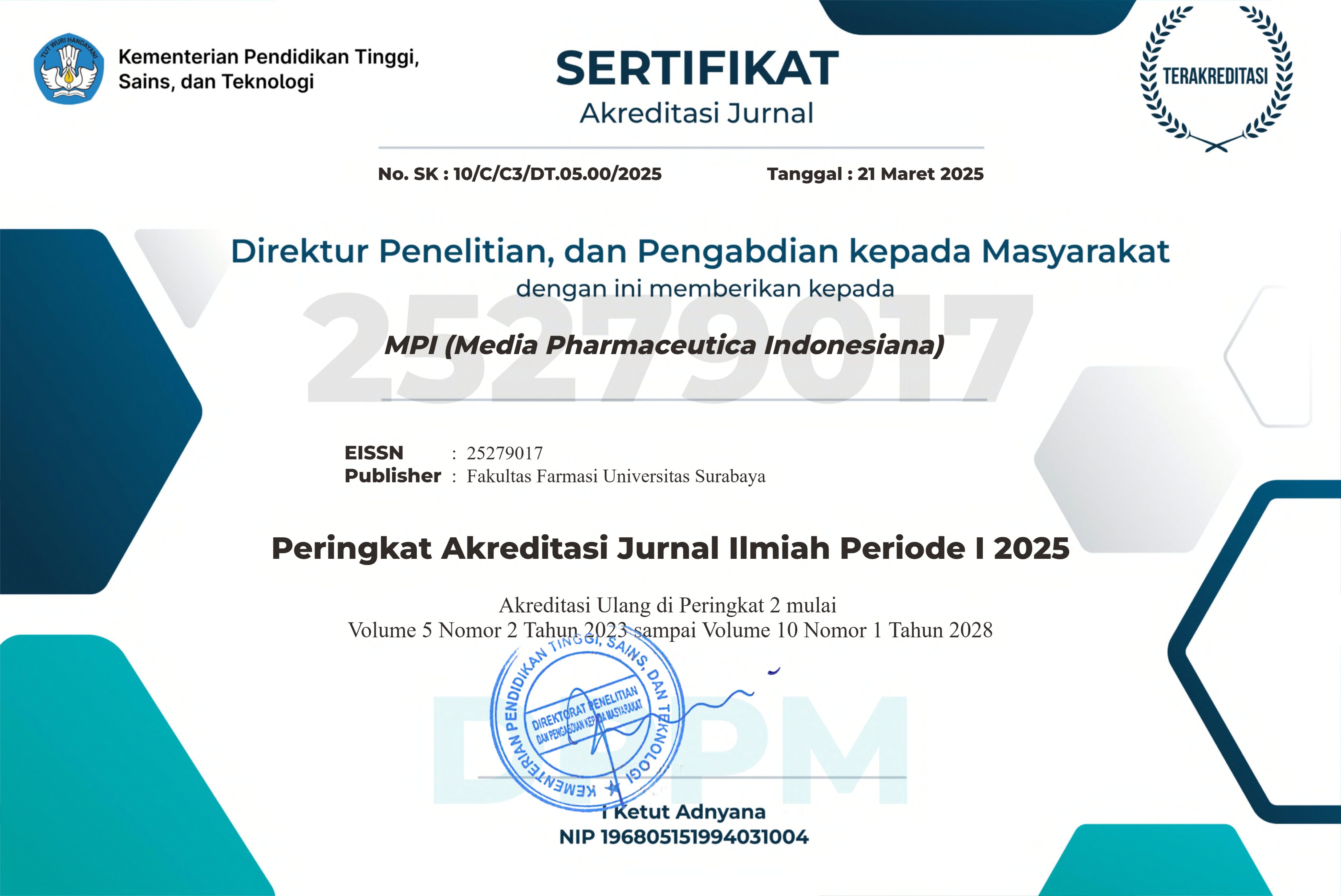Identification of Potential COVID-19 Targets and Pathways Derivate from Various Phenolic Compounds from Chives (Allium schoenoprasum) by Using Network Pharmacology Approach
 Abstract Views:
370 times
Abstract Views:
370 times
 PDF Downloads:
290 times
PDF Downloads:
290 times
Abstract
With the uncertainty of COVID-19 disease around the world, the discovery and development of novel treatments for COVID-19 becoming an emerging trend. Network pharmacology has been used for determining the potential targets from several diseases. This research mainly focused on the potential of Allium schoenoprasum against COVID-19 based on a network pharmacology approach. The methods consist of target identification of the compounds, target identification related to COVID-19 disease, compound-target interaction network, protein-protein interaction network and gene ontology and pathway enrichment analysis. Fifthy three main targets obtained from the compound-COVID-19 were identified as main targets from the compounds with MMP9, MPO, TLR4, MMP2, CCNB1, AURKB, PLK1, TOP2A, ALOX5, and CD38 becoming the top 10 core targets. Phenolic compounds in Allium schoenoprasum may act as anti-COVID-19 through several inflammatory and immune response pathways. Based on these results, it seems that phenolic compounds in Allium schoenoprasum might act as anti-COVID-19 via network pharmacology approaches.
Downloads

This work is licensed under a Creative Commons Attribution-ShareAlike 4.0 International License.
Articles published in MPI are licensed under a Creative Commons Attribution-ShareAlike 4.0 International (CC BY-SA) license. You are free to copy, transform, or redistribute articles for any lawful purpose in any medium, provided you give appropriate credit to the original author(s) and MPI, link to the license, indicate if changes were made, and redistribute any derivative work under the same license.
Copyright on articles is retained by the respective author(s), without restrictions. A non-exclusive license is granted to MPI to publish the article and identify itself as its original publisher, along with the commercial right to include the article in a hardcopy issue for sale to libraries and individuals.
By publishing in MPI, authors grant any third party the right to use their article to the extent provided by the CC BY-SA license.

 DOI:
DOI:










